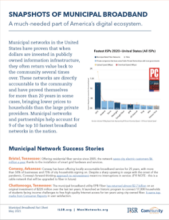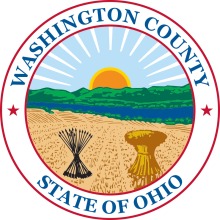New Fact Sheet: Snapshots of Municipal Broadband
Municipal networks in the United States have proven that when dollars are invested in publicly owned information infrastructure, they often return value back to the community several times over. This new fact sheet [pdf] highlights municipal broadband success stories from across the country and some of the many benefits the networks have brought to the communities they serve.
These networks are directly accountable to the community and have proved themselves for more than 20 years in some cases, bringing lower prices to households than the large private providers. Municipal networks and partnerships account for 9 of the top 10 fastest broadband networks in the nation.
Download Snapshots of Municipal Broadband: A Much-Needed Part of America's Digital Ecosystem [pdf] here.
For timely updates, follow Christopher Mitchell or MuniNetworks on Twitter and sign up to get the Community Broadband weekly update.



